UnderMiner
Silver Member
- Jul 27, 2014
- 3,796
- 9,675
- 🥇 Banner finds
- 2
- Detector(s) used
- Minelab Excalibur II, Ace 250
- Primary Interest:
- All Treasure Hunting
Found this large flint scraper today while mudlarking the North Shore of LI. Its design suggests early to mid-Neolithic, likely 10,000-6,000 B.C. at least. Very well made and comfortable to hold. The person who made this was right handed as the natural unworked 'heel' of the stone fits snugly in the palm of the right hand. It is still very sharp and cuts easily. Likely was used as a knife for cutting meat as well as a scraper for preparing hides for use in clothing. By complete coincidence I happened to find a modern spring-assisted knife no more than 100 feet away a mere 30 minutes later. Two knives were dropped in the same area 10,000 years apart from each other... and it only took me 30 minutes to find both. 
Short video explains all:
Front of the flint knife/scraper, the blade is on the right:
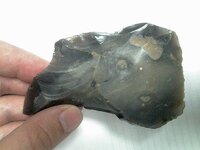
Back of the flint knife, the 'heel' which rests in the palm of the hand is facing up, the blade is on the right:
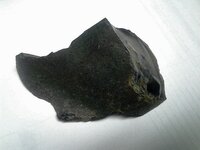
The cutting edge:
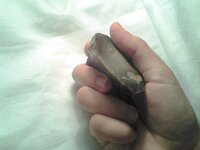
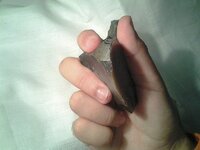
How the maker likely intended it to be held:
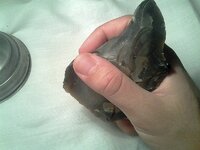
Blade shows signs of enhancements to add greater cutting power:
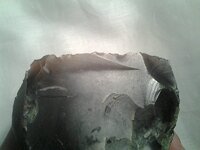
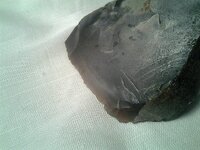
How it was made:
These pictures show the various strike marks made by the ancient flintsmith to craft his tool. Strike marks 1, 2, 3, & 4 formed the majority of the tool. The tool maker had the most trouble with strikes 2 and 4 as you can see he struck these places several times resulting in damage to the stone that is still visible. Strikes 1 & 3 however were sucessful right away as these places on the stone are clean breaks:
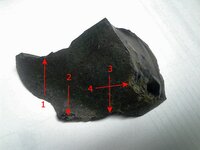
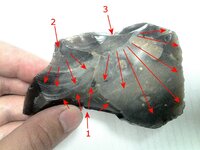
Strikes 5 & 6 were made to enhance the size of the cutting edge made by strike 4 which did not chip off enough to make the entire blade by itself.
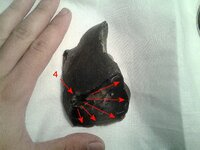
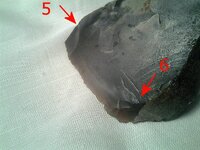
This is the spring assisted knife in situ, 30 minutes prior I found the stone tool within the same area:
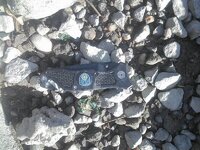
The modern knife cleaned up:
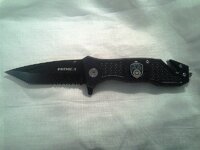
Two knives, 10,000 years apart:
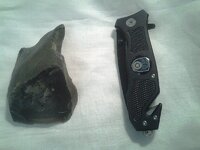

Short video explains all:
Front of the flint knife/scraper, the blade is on the right:

Back of the flint knife, the 'heel' which rests in the palm of the hand is facing up, the blade is on the right:

The cutting edge:


How the maker likely intended it to be held:

Blade shows signs of enhancements to add greater cutting power:


How it was made:
These pictures show the various strike marks made by the ancient flintsmith to craft his tool. Strike marks 1, 2, 3, & 4 formed the majority of the tool. The tool maker had the most trouble with strikes 2 and 4 as you can see he struck these places several times resulting in damage to the stone that is still visible. Strikes 1 & 3 however were sucessful right away as these places on the stone are clean breaks:


Strikes 5 & 6 were made to enhance the size of the cutting edge made by strike 4 which did not chip off enough to make the entire blade by itself.


This is the spring assisted knife in situ, 30 minutes prior I found the stone tool within the same area:

The modern knife cleaned up:

Two knives, 10,000 years apart:

Amazon Forum Fav 👍
Upvote
4






